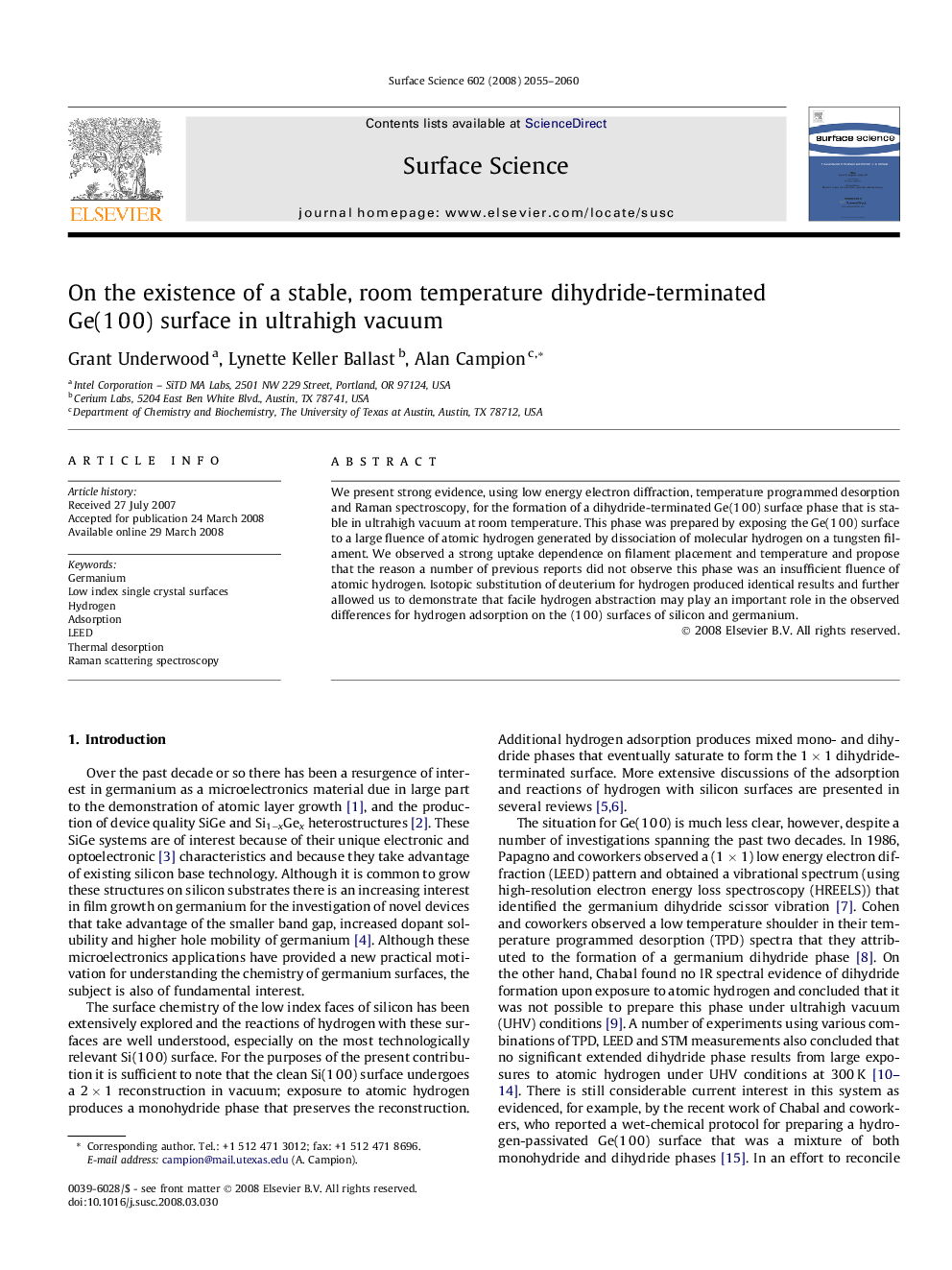| Article ID | Journal | Published Year | Pages | File Type |
|---|---|---|---|---|
| 5424484 | Surface Science | 2008 | 6 Pages |
Abstract
We present strong evidence, using low energy electron diffraction, temperature programmed desorption and Raman spectroscopy, for the formation of a dihydride-terminated Ge(1Â 0Â 0) surface phase that is stable in ultrahigh vacuum at room temperature. This phase was prepared by exposing the Ge(1Â 0Â 0) surface to a large fluence of atomic hydrogen generated by dissociation of molecular hydrogen on a tungsten filament. We observed a strong uptake dependence on filament placement and temperature and propose that the reason a number of previous reports did not observe this phase was an insufficient fluence of atomic hydrogen. Isotopic substitution of deuterium for hydrogen produced identical results and further allowed us to demonstrate that facile hydrogen abstraction may play an important role in the observed differences for hydrogen adsorption on the (1Â 0Â 0) surfaces of silicon and germanium.
Keywords
Related Topics
Physical Sciences and Engineering
Chemistry
Physical and Theoretical Chemistry
Authors
Grant Underwood, Lynette Keller Ballast, Alan Campion,
